Seven ways ‘traditional’ cycle training approaches don't work for women - and what you can do instead
Female physiology demands a different approach to training, nutrition, weight management and recovery – Dr Stacy Sims explains
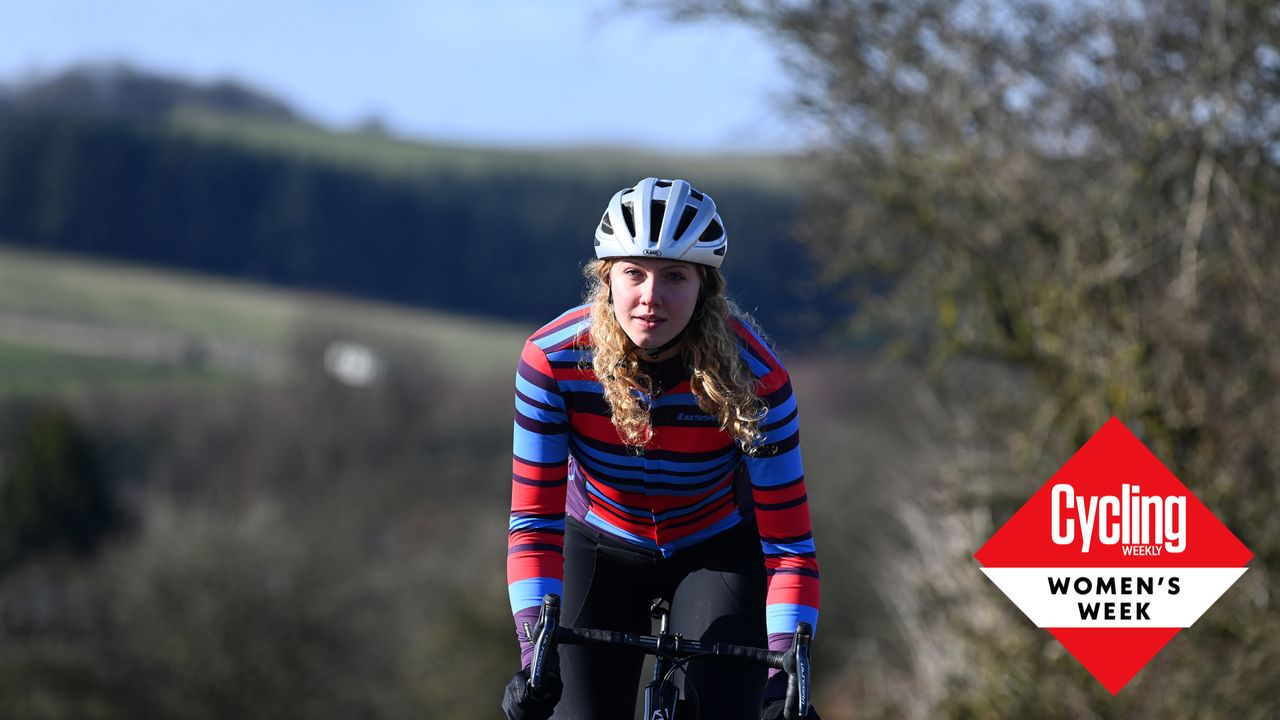
Women are not small men. This is the watchword of Dr Stacy Sims, a world leading physiologist who specialises in female nutrition, training and wellbeing. A former bike racer for UCI Team Tibco and a proud applied scientist, Sims has been in high-performance environments for decades. Her work has been tried and tested by the world’s top-performing female athletes, including 2019 USA national road champion Ruth Winder.
In 2016, Sims published Roar, a training guide that lifts the lid on female physiology’s best kept secrets. The book was widely hailed as a game-changer in understanding female physiology as pertains to sport. Sims agreed to speak to CW to help us bust the most prevalent myths while providing the corrective truth and, for good measure, throwing in some ‘biohacking’ tips for improving performance.
1. Myth: Always train three weeks on, one week off
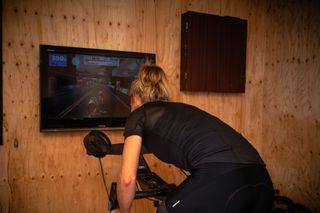
Three weeks on, one week off – a build phase followed by a shorter deload period. Online and in books, this is the most common structure for cycling training plans. The idea behind it is simple: progressively push the body until it is ‘overloaded’, then pull back and give yourself a chance to recover before you go again. It may follow a three-to-one pattern – shorter or longer depending on how you respond to training. If everyone’s doing it and has been doing it for so long, it must work, right? Wrong, at least if you’re female.
Truth: Match your training to your hormone cycles
Hormones influence how we adapt to training. For females, this includes how we build muscle, how we adapt to intensity, and how we metabolise carbohydrates. When hormones are high, they can limit the body’s ability to perform and respond to training stimuli. By contrast, the beginning of a natural cycle – when hormones are low – is often the ideal time to train hard and build muscle.
Sims is emphatic: “Know that you have this window of advantage in the low hormone phase,” and adds that the oral contraceptive can disturb the levels of naturally occurring hormones, so understanding this is important.
Armed with this information, females need to track their cycles so they can match training intensity to hormone levels. “Put in the high intensity session when your body can handle it,” Sims advises. “Get the really strong power and training stress when your body is in a low hormone phase. Work on technique in the high hormone days before your period – that’s your deload week.”
Get The Leadout Newsletter
The latest race content, interviews, features, reviews and expert buying guides, direct to your inbox!
Whether you are a male or a female – male sex hormones can also fluctuate significantly – effective training demands that you pay attention to what your body is doing and how you are feeling so you can match your training to your physiology.
2. Myth: Train low to burn more fat
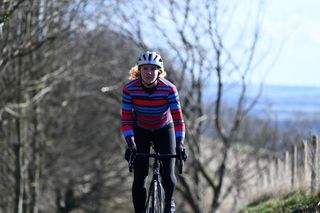
Carbs are the devil, they say... Less is more. Train low, bro. Body fat stores more than 100,000 calories of latent energy – burn some of it off to fly up climbs faster. If everyone’s doing it, it must work, right? Wrong if you’re female.
Truth: Fasted rides are a faux-pas for females
Under-fuel and you should prepare to underperform. Consuming too few calories for training pushes the body away from adaptation and towards conservation. “High-intensity training is for nought if you haven’t fuelled,” Sims warns. Men and women can fall foul of low energy availability (LEA) but women are particularly susceptible. In the short term, under-fuelling limits your ability to reap rewards from your hard work. In the long run, it has serious implications for overall health, including endocrine dysfunction and higher risk of bone fractures. For women, the obvious sign of LEA is disrupted or missed periods.
“Women tend to burn more fat and amino acids during exercise compared to men, regardless of the intensity,” explains Sims. “Men blow through carbohydrate and have to work harder to burn fat. Women are born with more of the protein and mitochondria to burn fat.” Lael Wilcox’s 2016 win at Trans Am and Fiona Kolbinger’s win at the 2019 Transcontinental Race stand testament to females being champion fatburners in very long events.
While female bodies are predisposed to going long, carbohydrates are still required to power the aerobic engine. Females need to fuel the fire with carbohydrates at all times, especially if we go hard. Before, during, and after workouts, carbs are our friends, not foes.
“Carb-loading has been shown to be less effective for females,” Sims explains. “If it’s a 90-minute tempo session, maybe take a banana and eat it in the second half of the session. It doesn’t have to be something major but you have to keep that fuelling going.”
Sim’s top tip: Plan your cycling nutrition as much as you plan your training!
3. Myth: The recovery window is wide
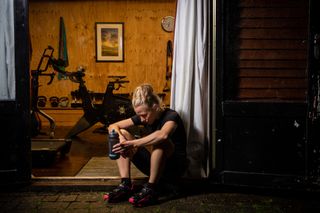
The latest research says that the recovery window is more like a barn door: refuelling within two to three hours is fine – no need to have the protein-loaded recovery drink pre-prepared and ready to down the minute we get in the door, right? Wrong if you’re female.
Truth: Replenish within 30 minutes
“Often we get up and are keen to get the workout done – but we pay less attention to the nutrition,” cautions Sims. “We know that men can go out and do these hard sessions and recover by eating their breakfast, but women cannot do this.” That protein shake does need to be the first thing in your hands after a ride. “Male muscle enzymes are different and they can afford to do lower-fuelled rides and recover with breakfast, but a woman must eat in and around training, especially early in the morning,” warns Sims, “otherwise they aren’t going to get the training adaptation.”
Sims is unequivocal: for females to benefit from their hard work, they need to fuel for recovery within 30 minutes.
4. Myth: Gyms are for meatheads
Cyclists don’t do gyms. Overgeared efforts will do the trick, and we need to be light like a butterfly to fly up those climbs; muscle gains are counterproductive to staying light, right? Wrong!
Truth: Weights are essential
“If you want to attack off the front, to get to the top of the hill first, you need strength,” explains Sims. Force production requires strength work, and this is particularly important for females.
“For women, the older you get, the less you have for [force] production. You have to replicate that with plyometric work, with heavy lifting, just to maintain that muscle integrity,” advises Sims. “In addition, strength work is beneficial for bone health.” What about cross-training with running? Not ideal, says Sims. “You need to have multidirectional force on the bone, which you can’t get from running or walking.” If you hate a gym, fear not – you can get it from 10 minutes of multidirectional jumping. However you get it, get into it. Without it, you’re leaving your chips on the table.
5. Myth: Hydrate with carb-rich drinks
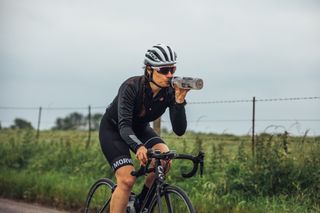
Most hydration products advise drinking 500ml every 45-60 minutes or drinking to thirst. Most products combine hydration with energy, and their marketing tells us they’re helping us with this two-for-one convenience, or three-for-one if they add in extra salts. Simple, right? Not so.
Truth: Hydration and refuelling are separate needs
“The main point of hydration is to keep your body-fluid levels high enough to continue functioning properly,” Sims explains. Blood is the major vehicle for transporting fuel and waste around the body. When you are dehydrated, your blood gets thicker and everything is harder. You’re cycling through treacle, almost literally.
“Ninety-five per cent of fluid absorption happens in the small intestine,” Sims explains. “When highly-concentrated [hypertonic] carb-containing fluids go into the small intestine, it increases pressure. The body pours water in to reduce the pressure, pulling water from other spaces in the body to dilute what’s in the small intestine.” Long story short? You need to drink lower-concentration carb drinks so as to hydrate optimally. “It’s not about carbs for fuelling,” explains Sims.
“It’s about carbs to allow the fluid to be absorbed.” Sims advises that most athletes need to keep the carb in a hydration drink at three to four per cent, less than what many sports drinks contain. Females have a reduced ability to absorb fructose, so Sims advises avoiding it. With (generally) less muscle mass and blood volume than males, females are more sensitive to body fluid losses. Those taking the oral contraceptive or in high hormone phases may have a muted thirst mechanism, so it’s better to drink to schedule.
6. Myth: Get your energy in any form you like
When you’re burning through calories, you don’t need to pay as much attention to what you put down your gullet. After the daily requirement boxes are ticked, everything else is just fuel for the fire. When we ride, the easier we can get more carbs on board, the better. Or is it?
Truth: Protect your gut - eat real food
“You have athletes who are conscious of what they are eating, but what they eat during exercise tends to be simple sugars,” explains Sims. “If all we ingest is simple sugar [when we exercise], the bacteria that thrives on it will thrive in our gut.” Over time, this leads to gut problems. Sims insists on fuelling with real food on the bike.
What about when you need that quick hit in a race? No problem, says Sims: “When you are looking for a quick hit to raise your blood sugar, you can use a glucose tablet that can be absorbed in the mouth without disturbing the gut.” Her advice is simple: “The fuel that you use during training matters. You need a good variety of high-fibre fruit and veg to feed the lower gut.”
7. Myth: Pregnant women must stop riding
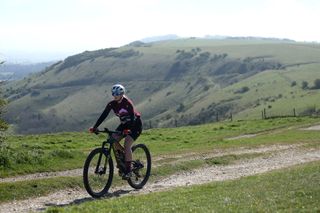
If a woman is pregnant, it’s time to ease up on the training programme. You can still exercise a bit but you need to row it back. The growing foetus needs all the energy it can get, especially in the second half of a pregnancy, right? Well, it depends.
Truth: Every pregnancy is different
Sims, a mother herself, speaks from experience. “Every pregnancy is different, even if a woman has more than one kid. If you are fit, then you can keep doing it; your body will tell you when to stop.”
Sims notes that there are evidenced positive effects from exercise for the foetus, such as increasing capillarisation of the placenta. She acknowledges that some obvious changes are required, e.g. avoiding competitive group rides due the risk of crashing. Sims advocates staying as active as long as it feels good to do so.
Find more advice on cycling and pregnancy over here, with our guide on staying active whilst growing a little person.
And finally: listen to your body
Cyclists are champions at pushing through pain, ignoring those natural cues. Yet those same natural cues are key to ‘biohacking’ for performance, i.e. working constructively with your own biology. How does Sims square this circle?
“I tell people to do 10 minutes of yogi mindfulness, but really it’s just understanding sensations,” explains Sims. “Once you become more in-tune to the feelings of external and internal sensations, it’s easier to tune into the key questions: Am I tired from sleep? Am I tired from muscular fatigue? Or am I tired just because I’m bored? It does take some time, but you can eventually start to pinpoint the subtleties.”
Sims concludes by coming full circle to the beginning of the conversation. “If you’re tired or failing to make fitness gains despite fuelling appropriately in and around your training,” she advises, “then you can remove fuelling from the equation and interrogate other factors.” For women, this also means understanding that your physiology is not the same as male physiology – because women are not small men.

Thank you for reading 20 articles this month* Join now for unlimited access
Enjoy your first month for just £1 / $1 / €1
*Read 5 free articles per month without a subscription

Join now for unlimited access
Try first month for just £1 / $1 / €1
Deena Blacking is a cycling coach and sports consultant at drivetrain.cc
-
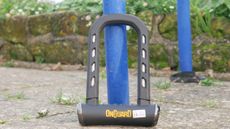 OnGuard RockSoild 8950 review: finally, the bike lock to stop opportunistic thefts?
OnGuard RockSoild 8950 review: finally, the bike lock to stop opportunistic thefts?This is the lock that defeated our brutal angle grinder test with barely a scratch. Rated Sold Secure Diamond, I rate and recommend it too
By Matt Ischt-Barnard Published
-
 Cycling coverage is getting much more expensive in the UK – tell us what you think
Cycling coverage is getting much more expensive in the UK – tell us what you thinkEurosport is closing down in the UK and there will be no more free-to-air Tour de France coverage in Britain from 2026
By David Bradford Published
-
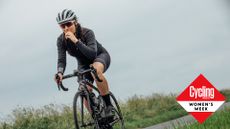 Female-specific nutrition strategies: how to adjust your fuelling at each stage of the menstrual cycle
Female-specific nutrition strategies: how to adjust your fuelling at each stage of the menstrual cycleYour carbohydrate and protein demands vary greatly throughout the month - here’s how to make sure you’re giving your body what it needs
By Andy Turner Published
-
 Strava data shows women restricted by daylight hours for exercise - but female Gen Z Brits prove more active than men
Strava data shows women restricted by daylight hours for exercise - but female Gen Z Brits prove more active than menGlobal data reveals women 8% less likely to exercise outside post-sunset
By Anna Marie Abram Published
-
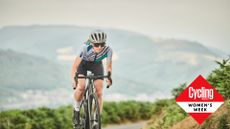 It's 'Women's Week' on Cycling Weekly: your guide to the training, tech and inspirational tales of (and by!) cycling's key women
It's 'Women's Week' on Cycling Weekly: your guide to the training, tech and inspirational tales of (and by!) cycling's key womenWe've got detailed articles on training with the menstrual cycle, a look back at the woman who entered the 1924 edition of the Giro d'Italia, and a dive into 'women-specific geometery' and its relevancy today - plus much, much more!
By Anna Marie Abram Published
-
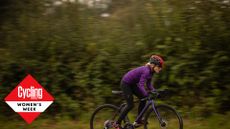 Stock bike setups are often stacked against women and smaller adult cyclists - here’s how to achieve a better fit
Stock bike setups are often stacked against women and smaller adult cyclists - here’s how to achieve a better fitFrom frame size to stance width, crank length to brake levers, here's eight common issues faced by smaller adult cyclists – and a bike fitter’s advice on how to overcome them
By Nicole Oh Last updated
-
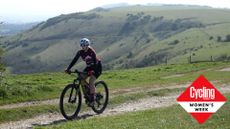 Cycling and pregnancy: expert advice on staying active whilst growing a little person
Cycling and pregnancy: expert advice on staying active whilst growing a little personCycling Weekly's digital editor was never going to spend 40 weeks off the bike...
By Michelle Arthurs-Brennan Last updated
-
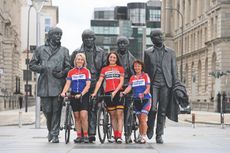 Three's peak: How a trio of veteran women TT racers set a blistering new Three Peaks record
Three's peak: How a trio of veteran women TT racers set a blistering new Three Peaks recordThree women, three peaks, one target: to hike up and down each mountain, cycling from one to the next, in record time. CW finds out how they got on
By David Bradford Last updated
-
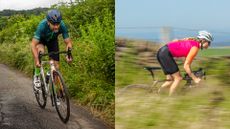 Ideal time of day to exercise differs between active men and women
Ideal time of day to exercise differs between active men and womenDig deep and make it count - new research shows that the optimal time of day to burn fat is not the same across the genders
By Anna Marie Abram Last updated
-
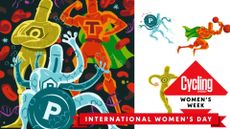 How hormones affect cycling performance - and what you can do to harness them
How hormones affect cycling performance - and what you can do to harness themNo, testosterone won’t give you superpowers any more than being on your period writes off your race prospects. Michelle Arthurs-Brennan debunks the myths around sex hormones
By Michelle Arthurs-Brennan Last updated